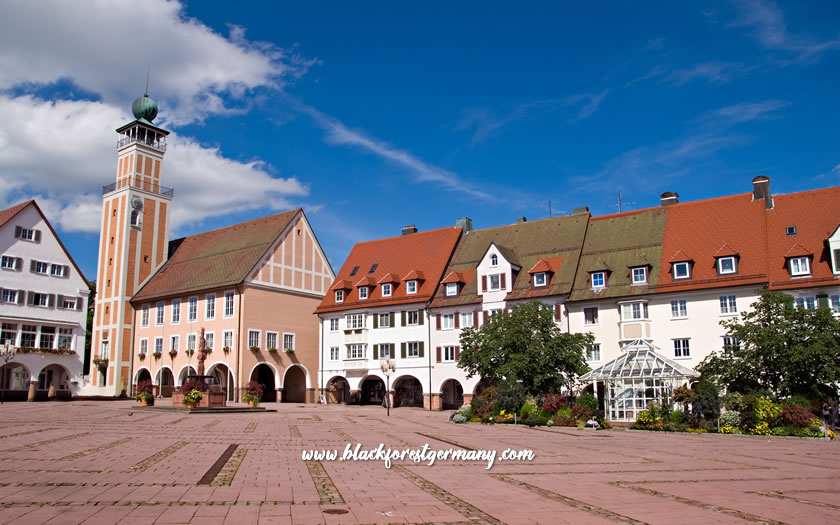

Freudenstadt, Germany
The town of Freudenstadt in the northern Black Forest is both a popular tourist destination and the administrative centre for the settlements on the north-eastern side of the region.
The town has long been a centre for 'wellness tourism' because of the relatively mild climate and high number of sunny days experienced in this part of the Black Forest.
Freudenstadt is also known for its market square with arcades. According to the local tourist office, it is the largest in Germany.
Where is Freudenstadt in the Black Forest?
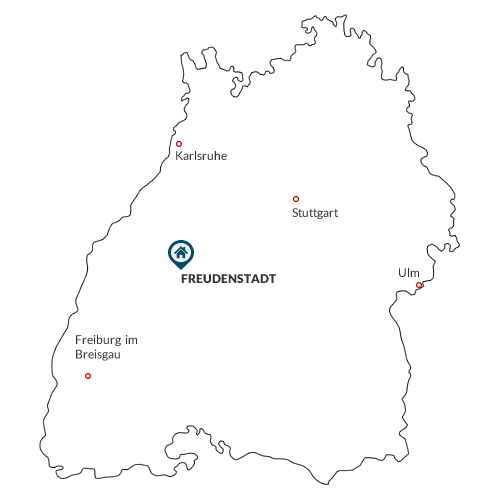
Freudenstadt lies on a relatively high plateau on the eastern side of the northern Black Forest. Valleys descend from the plateau in three directions, providing good transport links to the town.
Getting to Freudenstadt
There are actually three different railway lines which serve Freudenstadt. The Gäubahn line provides a Regional Express service between Stuttgart and Freudenstadt, while the Murgtalbahn offers a rail link through Rastatt to Karlsruhe. To the south, the Kinzigtal line connects Freudenstadt to Offenburg.
Four separate minor roads converge in Freudenstadt. The B28 runs from the French border in the west to Ulm in the east. The B462 leads in a generally north-south direction from Rastatt to Rottweil. The scenic B500, also known as the Schwarzwaldhochstraße ('Black Forest High Road'), connects Freudenstadt via the B28 to Baden-Baden. The B294 links Pforzheim in the north to Freiburg am Breisgau to the south-west.
The nearest motorways to Freudenstadt are the A81 Stuttgart-Singen motorway to the east and the A5 Rheintal motorway to the west.
What to do in Freudenstadt
The town centre of Freudenstadt houses many of the sights in the area. The massive market square, rebuilt since the destruction at the end of World War II, now houses Renaissance-style arcades (known as the 'Bögele') and the 50 fountains created to mark the 400th anniversary of the town.
The square itself is split into three parts: Untere Marktplatz, Obere Marktplatz and Postplatz. The summer months see markets held twice a week (usually on Tuesday and Friday) with the winter season seeing just one market each week.
The Freudenstadt tourist office can be found in the market square, along with a small regional museum covering local culture and the development of wellness tourism in the area. These are both located in the Stadthaus (which, somewhat confusingly for foreigners, translates to 'town hall', although the town hall is actually the Rathaus and also on Marktplatz).
The Rathaus has a tower which can be climbed during opening hours for a view over the centre of Freudenstadt. Alternatively a 30-minute walk up the local hill - the Kienburg at 800m in altitude - offers the Friedrichsturm for another higher panorama over the local countryside. This was built for the 300th anniversary of Freudenstadt in 1899 and was named after the original founder of the town.
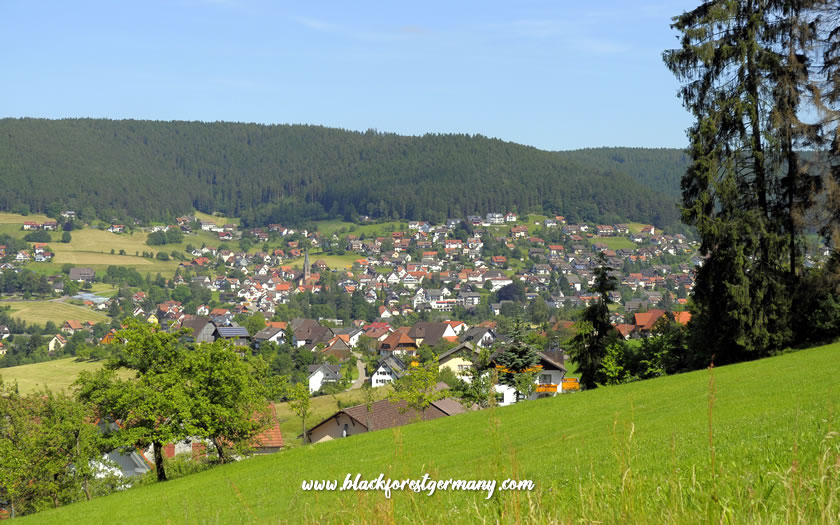
View over the countryside near Freudenstadt
The History of Freudenstadt
Freudenstadt can trace its history back to the end of the 16th century. Duke Frederick I of Württemberg ordered architects to plan a new town in the Black Forest based on Renaissance design and principles.
The layout of Freudenstadt was based on a traditional board game ('nine men's morris') and had a new residential palace at the heart of it. Originally it was planned to have 3500 inhabitants (making it one of the largest towns in the region at the time) and the parish church was dedicated in 1601.
Unfortunately the death of Duke Frederick and the subsequent appearances of the plague put paid to the original vision for Freudenstadt. And, like many other towns in Germany, it was devastated during the subsequent religious wars and bouts of plague.
It was not until the 19th century that Freudenstadt started to develop as a 'Kurort' - what we would now call a 'wellness destination' - because of its mild weather, record of sunshine and location in the heart of the northern Black Forest.
The building of a rail link to the city of Stuttgart helped with the development of this tourism and prominent visitors included the British and Swedish royal families.
Freudenstadt was badly damaged during fighting at the end of World War II but the town centre and important buildings such as the town hall, the parish church and the renowned market square were rebuilt by the mid-1950s.
Where to Stay in Freudenstadt
Some of the top-rated hotels in Freudenstadt are listed below. Those who prefer self catering apartments or bed-and-breakfast accommodation may prefer to check the apartment and room availability on the map below the hotel listings.
Hotels in Freudenstadt
Here are three of the top wellness hotels in the Freudenstadt area, rated highly by visitors from our accommodation fulfilment partner, Booking.com.
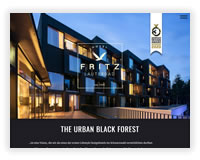
Am Zollernblick 1
72250 Freudenstadt - Lauterbad
Website: www.fritz-lauterbad.de
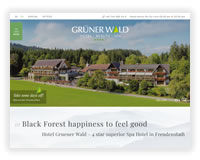
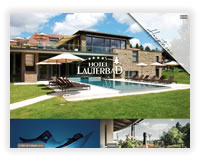
Check accommodation availability in Freudenstadt
Check the availability of all kinds of accommodation in Freudenstadt, from apartments to guesthouses and hotels, with this town map. Zoom in and out using the '+' and '-' signs and use the search box to choose appropriate dates. Click on the price to see more details about the accommodation.
